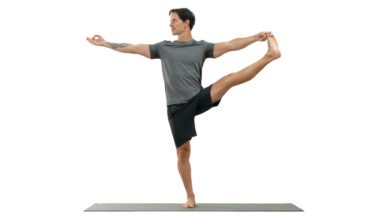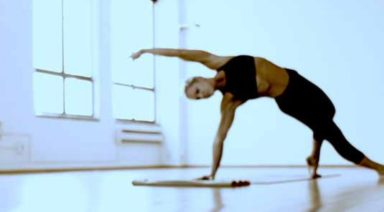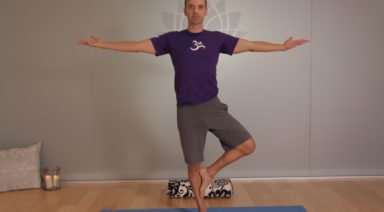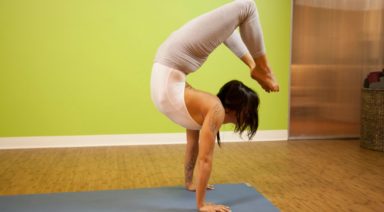Seven Points of Meditation Posture

The seven points of meditation posture have been used for thousands of years by great Masters and Yogis and have proven to be highly effective for creating successful meditation practices. These meditation cues are a necessary foundation to become successful in taming your mind through this ancient practice. Whenever preparing to meditate, check into your body and encourage that all 7 points are in position.
For a person not accustomed to meditating, the sitting posture may be an uncomfortable position to achieve. The most difficult part can be sitting in a cross-legged position called Full Lotus Pose (Padmasana). If you cannot do the Full Lotus Position, then explore Half Lotus Pose (Ardha Padmasana). If you still cannot be relaxed or comfortable in Half Lotus, then just sit in a position that is comfortable and stable. Generally, people can sit in a loosely, cross-legged posture with the feet beneath the legs, but many people do not naturally have flexible joints or may have some injuries or damage. So please do not be shy if you need to use a chair or sit on props. Folded up blankets work nicely as well to elevate the hips and release discomfort or tension out of the legs, hips, and back.
The seven points of meditation posture are:
-
The sitting position, preferably the Lotus position.
-
The position of your back should be straight but not tense or tight.
-
The position of your shoulders should be back a little. Raise your shoulders up to your ears and then roll them back so that your shoulder blades move downwards. This motion helps to guide the upper body into position.
-
The position of our hands-there are three methods:
- For general relaxation, your hands are in your lap, not too low, with the right hand in the left hand, palms up and the thumbs touching.
- For determination, your hands are flat, palms down, resting one hand on each knee.
- For stimulation, which activates and frees the energy systems of the body (especially the Body, Speech and Mind), each hand has the thumb touching the base of the ring finger, and the fingers closed firmly, not too tight, round the thumb, and the hand resting palm down on each knee.
-
The position of your neck is held tall while lightly tilting the skull down a few millimeters (by gently bringing in your chin). Ensure the balance of the skull is maintained over the neck.
-
The position of your eyes: there are three methods;
- The eyes look down following the tip of your nose.
- The eyes are gently closed.
- The eyes look straight ahead, but very slightly lower than level or lower than the horizon.
-
The position of your mouth and tongue; your mouth can either be closed or just slightly open so air can escape (as if you were saying softly the letter AH). The tongue is relaxed in a natural position, or the tip of the tongue can lightly touch the roof of the mouth just behind the area where the gums meet the upper front teeth (this called Jiva Bandha).
Now that you have an idea of a comfortable meditation position, you simply breathe out, breathe in, relax, and watch the breath without interfering. The traffic of your thoughts in your mind is always there. Just let the thoughts move, do not interfere or try to change anything, do not try to diminish anything, or try to increase anything. As you rest and watch the breath, the thoughts will dissolve on their own. They will diminish and dissolve to the earth, dissolve to space, and dissolve to the air. The mind will relax on it’s own and become more peaceful and content.
For those who wish to pursue meditation lessons, it is crucial to understand this Three-Point Instruction:
-
Meditation is not meditation unless you make it a habit. When meditation practice becomes habitual, this becomes meditation.
-
You have to spin the twisted yarn or string of the mind not too tight and not too loose. Too tight, it will be too hard and it will break. And too loose, it will be too soft and it also will break. When you find this balance of mental tension, this becomes meditation.
-
If you do not stir water, it settles and remains clear. If you do not disturb the mind, it will settle and become peaceful and free. When you achieve this state, this is mediation.
A regular meditation practice will definitely allow your mind to organize and stabilize itself, and this will allow us to gain peace, happiness, clarity, and tranquility. Mastering the seven points of meditation posture as well as understanding the Three-point instructions on meditation are key elements in cultivating a solid foundation for your meditation practice. Enjoy your peace of mind!
Phalakasana: Plank Pose

ADJUSTMENTS | BENEFITS | SEQUENCING | SANSKRIT | STEPS
Phalakasana (fall-ack-AHS-anna), is an essential posture for a strong yoga practice. Holding plank pose will improve your endurance and muscle tone, help develop the strength needed for more complex poses, and generate heat and stimulating the navel chakra.
Philosophy + Origin
Hidden in the pose’s name is the Sanskrit word “phala,” which means to bear fruit or ripen. In yoga, the idea of tapas, often translated as “heat,” “passion,” or “discipline,” fuels the physical asana practice, encouraging students to seek out the challenge again and again in order to become stronger, to build an internal flame in the body that fuels every aspect of life. When you think of plank pose as an opportunity to “ripen” or “bear fruit,” you become aware of the transformative effect of this seemingly simple (although challenging) pose. Each time you enter the pose, use the breath to ripen the fruit of your labors. The ability to hold this pose with steadiness and grace is known to create major shifts in your practice and your life.




































